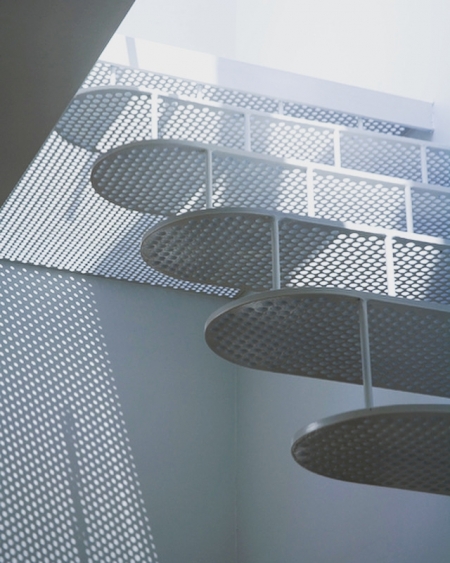機能と装飾
モダニズムは機能を発見し、分割し、配置することだとしたら、配置を変えたり、分割を変えたり、機能を見直したりすれば、モダニズムの延長で語ることができるし、変えたり、見直したりした事もすんなりと新しい事として受け入れやすいが、今まで気がつかなかった建築と人の関係性を築くことによって、機能が意味を持たない、重要ではないことにならないか、そうすると、見た目はモダニズムだが、中身はまるで違うものにならないかと考えている。
機能とは建築と人をつなぐ役目があり、機能が存在するから、人は建築の中でアクティビティを起こす、その場合、機能は人が人のことを考えて決めているように思うが、実際は建築が成立するように人にとって都合が良い機能を選択しているだけであり、建築の用途が先にある。
だから、機能は人を反映していないし、人は定められた機能に合わせているだけである。
この機能を意味が無いものにできれば、建築と人の新たな関係性が築ける。そこで、機能の対極にある「装飾」を使って空間を構成しようと考えている。それも装飾が建築と人をつなぐ役目をすることによって、新たな装飾の役割が二次的に登場しないかと、その可能性を視野に入れて考えている。
"Function and decoration"
If modernism is to discover, divide and arrange functions, if you change the arrangement, change the division, and review the functions, you can talk about, extend, and review modernism as an extension of modernism It's easy to accept things as new, but building relationships between architecture and people you didn't even realize would make the functions meaningless or insignificant. I'm thinking if it will be different.
Functions have the role of connecting architecture and people, and because functions exist, people initiate activities in architecture.In that case, it seems that functions are determined by thinking of people, but in reality, Only the functions that are convenient for human beings are selected so that the construction is realized, and the purpose of the construction is first.
So the function doesn't reflect the person, and the person just fits the defined function.
If this function can be made meaningless, a new relationship between architecture and people can be established. Therefore, we are trying to construct a space using "decoration" at the opposite end of the function. In addition, we are considering the possibility that a new role of decoration will appear secondarily by the role of decoration connecting architecture and people.

